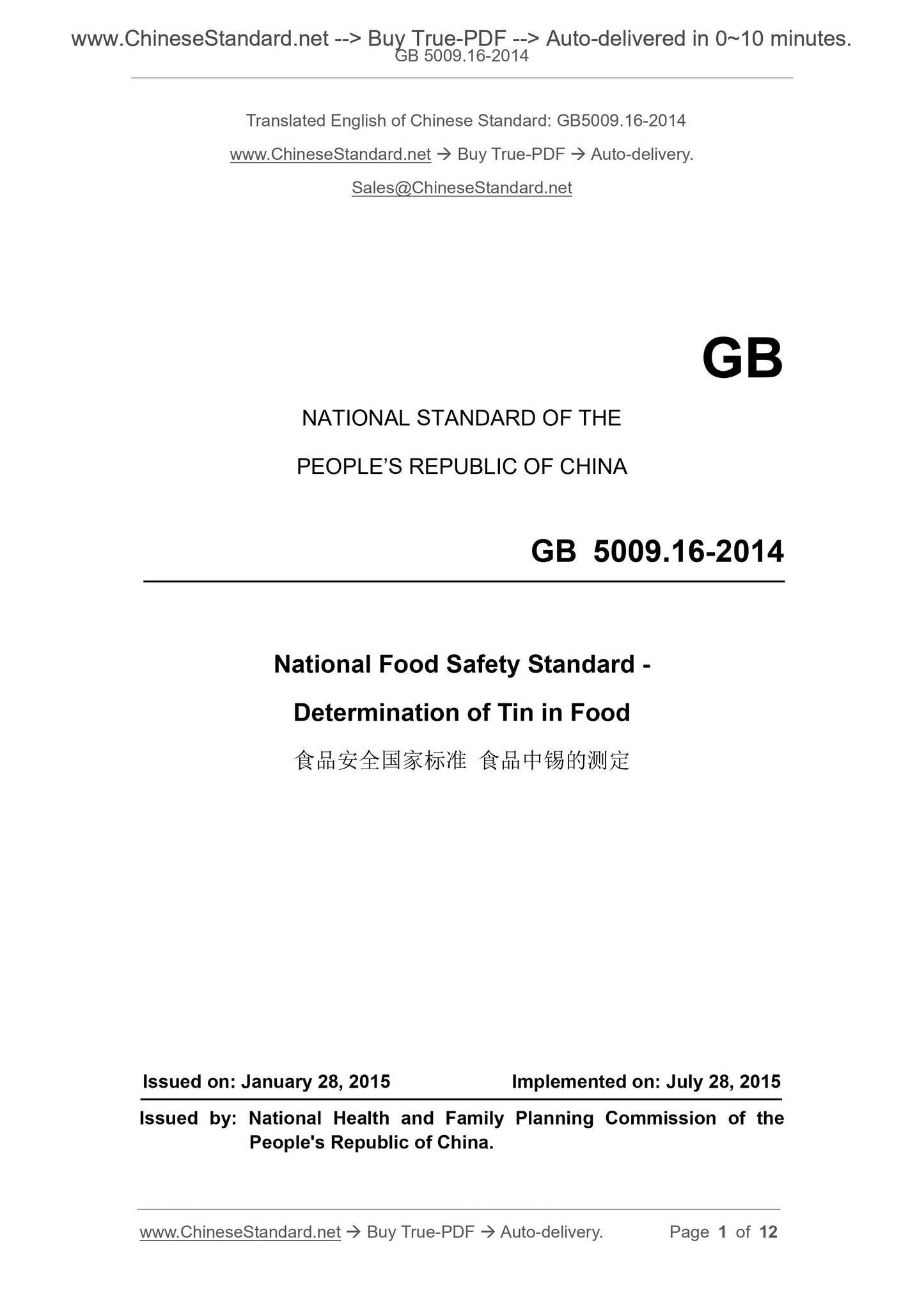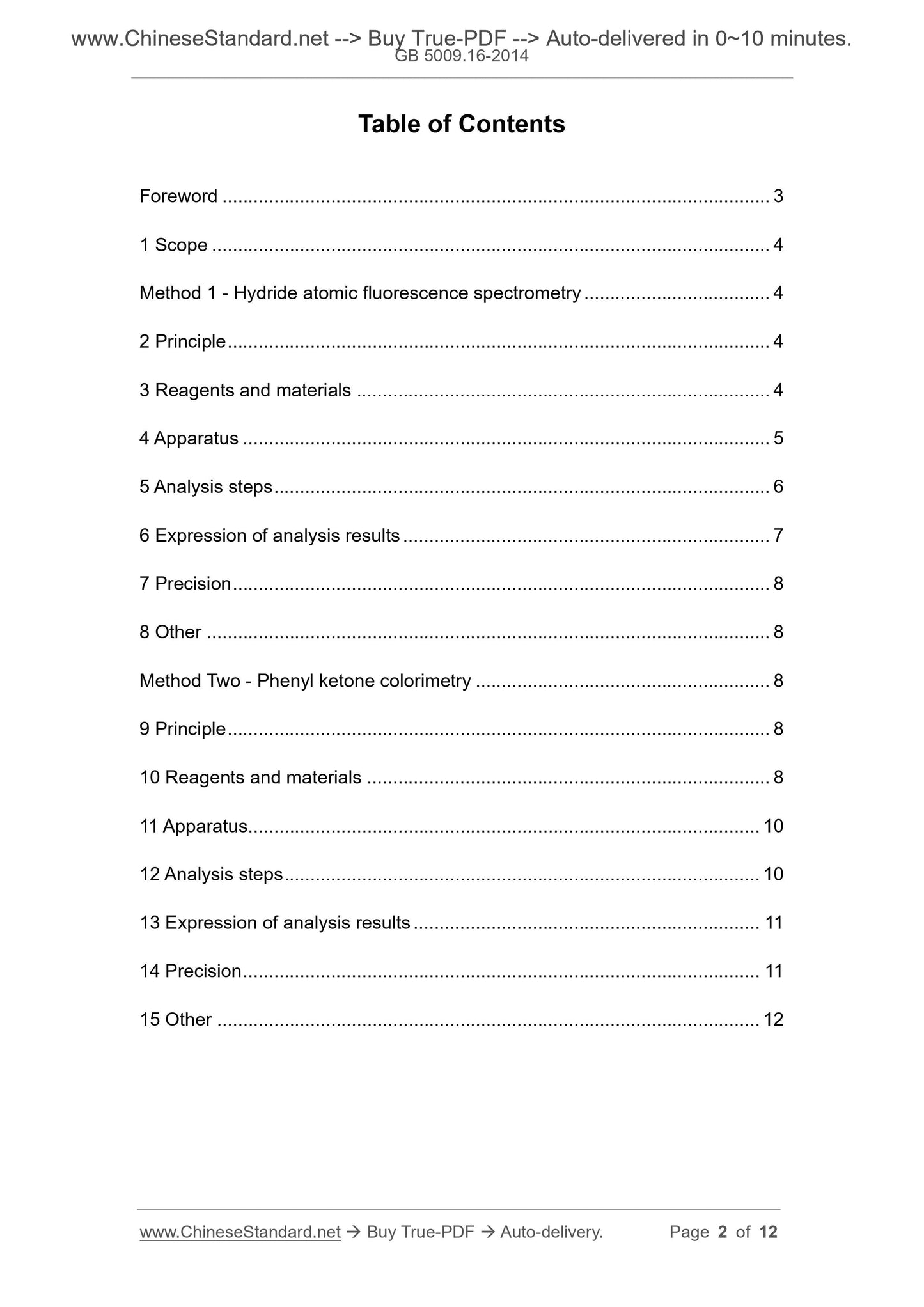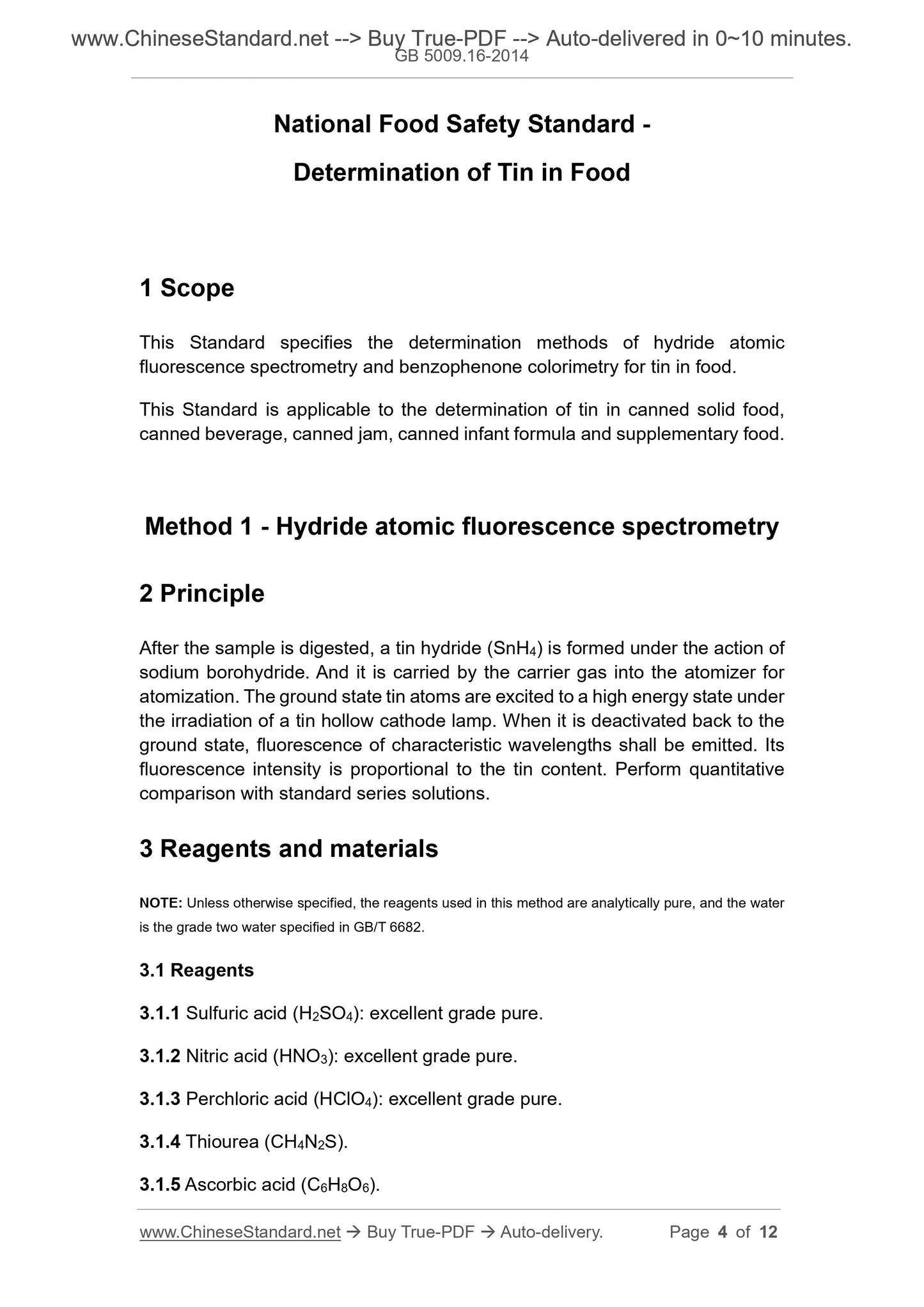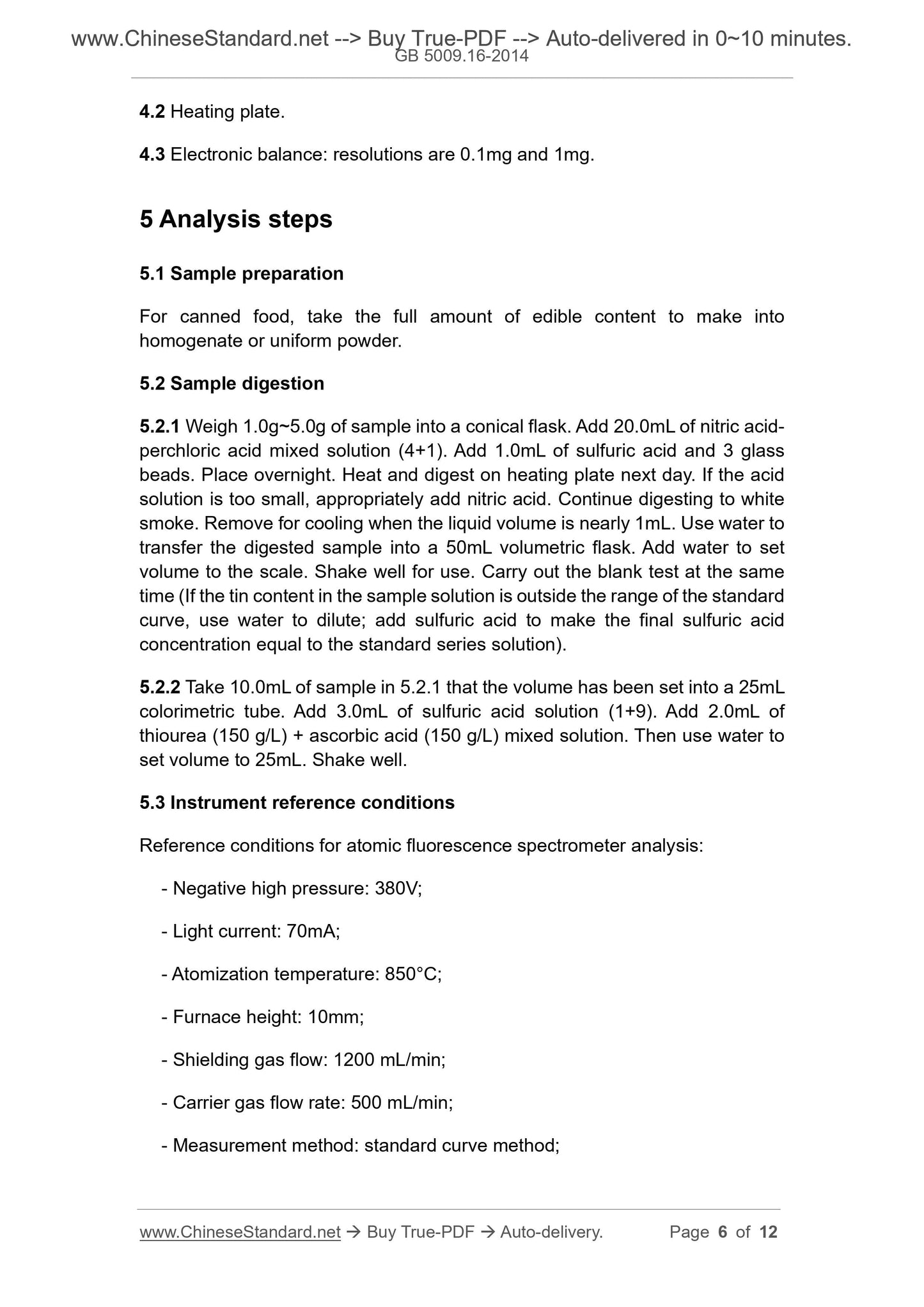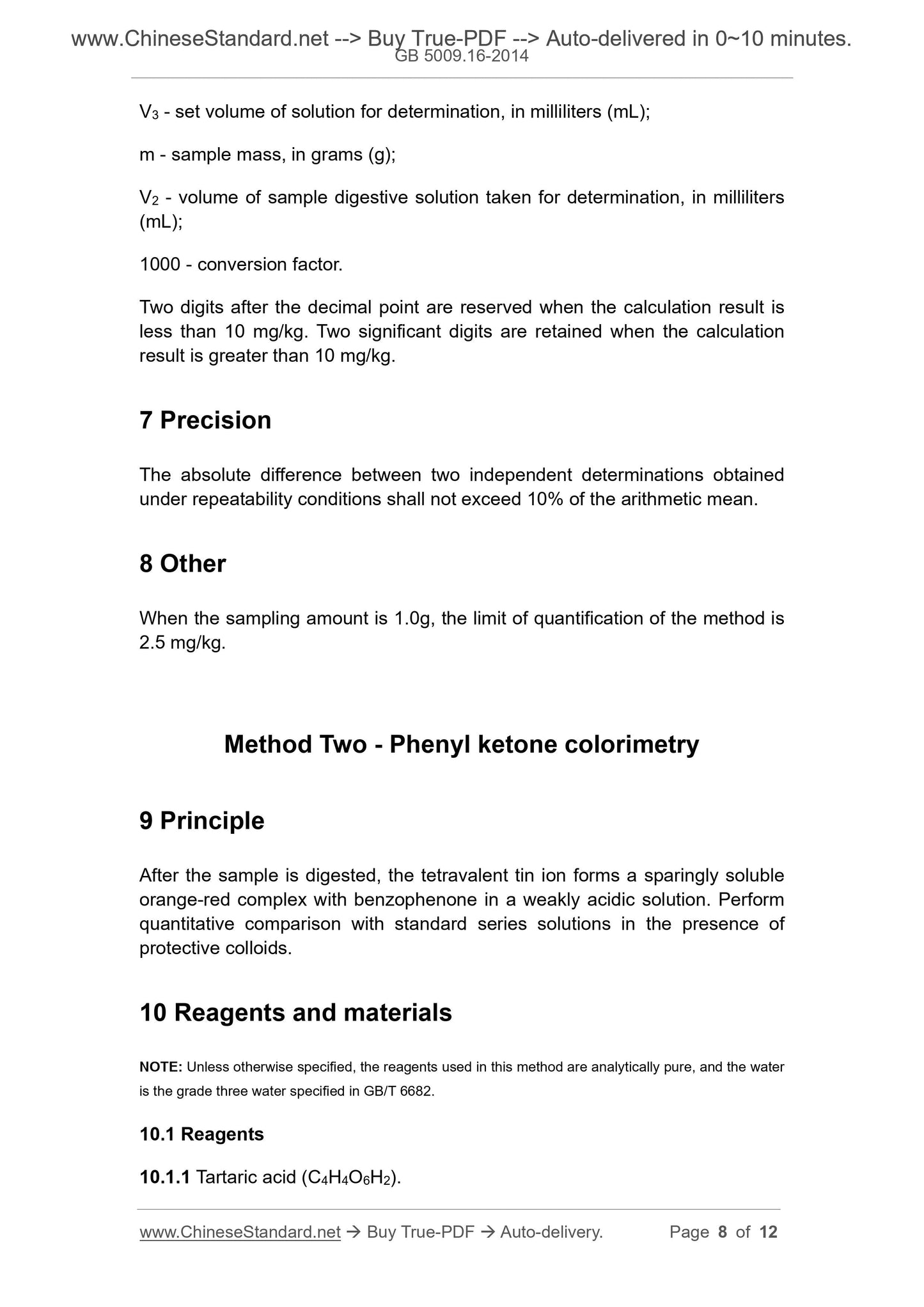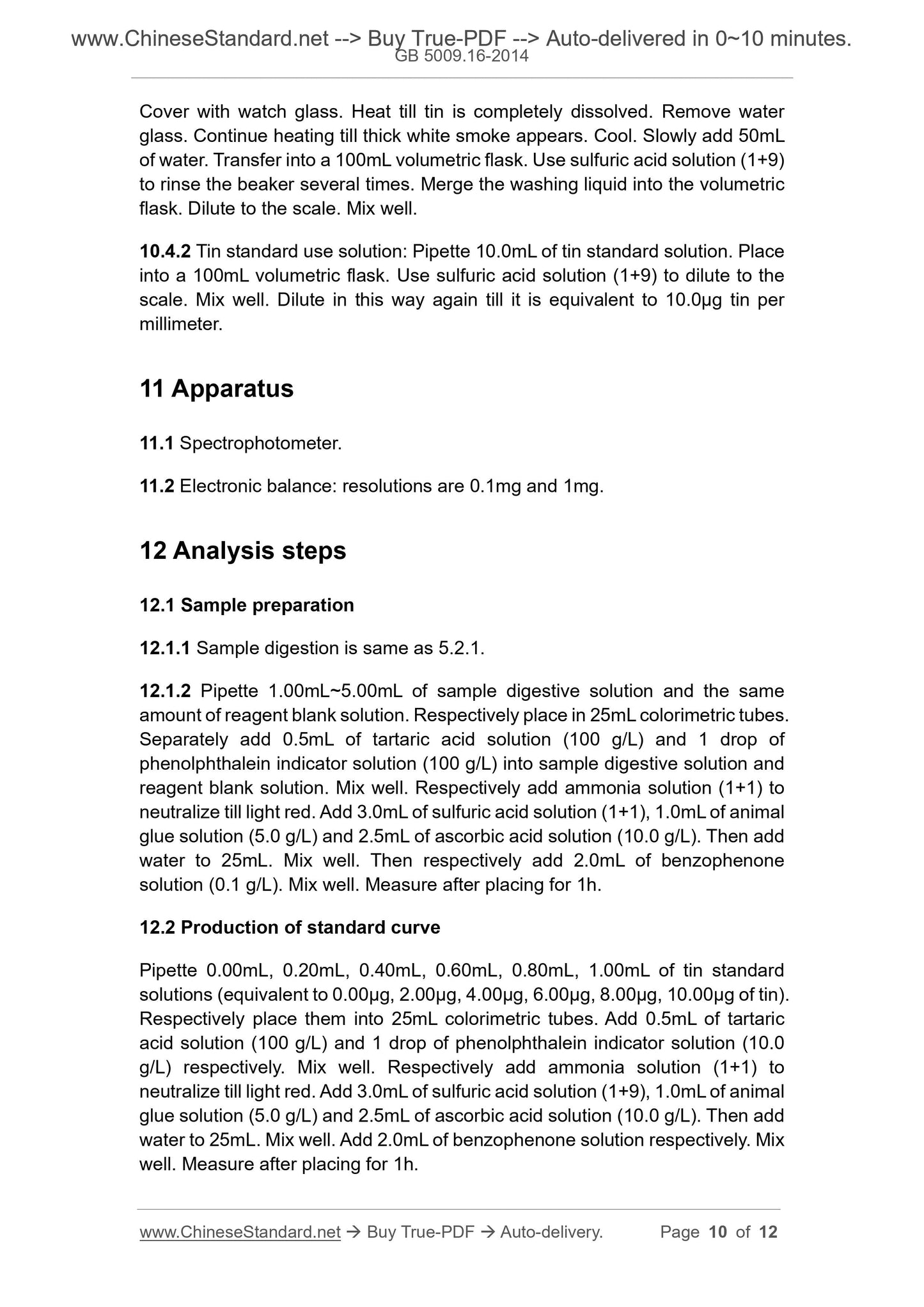1
/
of
6
PayPal, credit cards. Download editable-PDF & invoice in 1 second!
GB 5009.16-2014 English PDF
GB 5009.16-2014 English PDF
Regular price
$145.00
Regular price
Sale price
$145.00
Unit price
/
per
Shipping calculated at checkout.
Couldn't load pickup availability
GB 5009.16-2014: National Food Safety Standard -- Determination of Tin in food
Delivery: 9 seconds. Download (and Email) true-PDF + Invoice.Get Quotation: Click GB 5009.16-2014 (Self-service in 1-minute)
Newer / historical versions: GB 5009.16-2014
Preview True-PDF
Scope
This Standard specifies the determination methods of hydride atomicfluorescence spectrometry and benzophenone colorimetry for tin in food.
This Standard is applicable to the determination of tin in canned solid food,
canned beverage, canned jam, canned infant formula and supplementary food.
Method 1 - Hydride atomic fluorescence spectrometry
Basic Data
| Standard ID | GB 5009.16-2014 (GB5009.16-2014) |
| Description (Translated English) | National Food Safety Standard -- Determination of Tin in food |
| Sector / Industry | National Standard |
| Classification of Chinese Standard | C53 |
| Classification of International Standard | 67.040 |
| Word Count Estimation | 8,896 |
| Date of Issue | 1/28/2015 |
| Date of Implementation | 7/28/2015 |
| Older Standard (superseded by this standard) | GB/T 5009.16-2003 |
| Regulation (derived from) | National Health and Family Planning Committee Announcement 2015 No. 2 |
| Issuing agency(ies) | National Health and Family Planning Commission of the People's Republic of China |
| Summary | This Standard specifies the method for the determination of tin in foods hydride atomic fluorescence spectroscopy and Phenylfuoron colorimetry. This Standard applies to canned solid foods, canned drinks determination, canned jams, canned infant formula an |
Share
